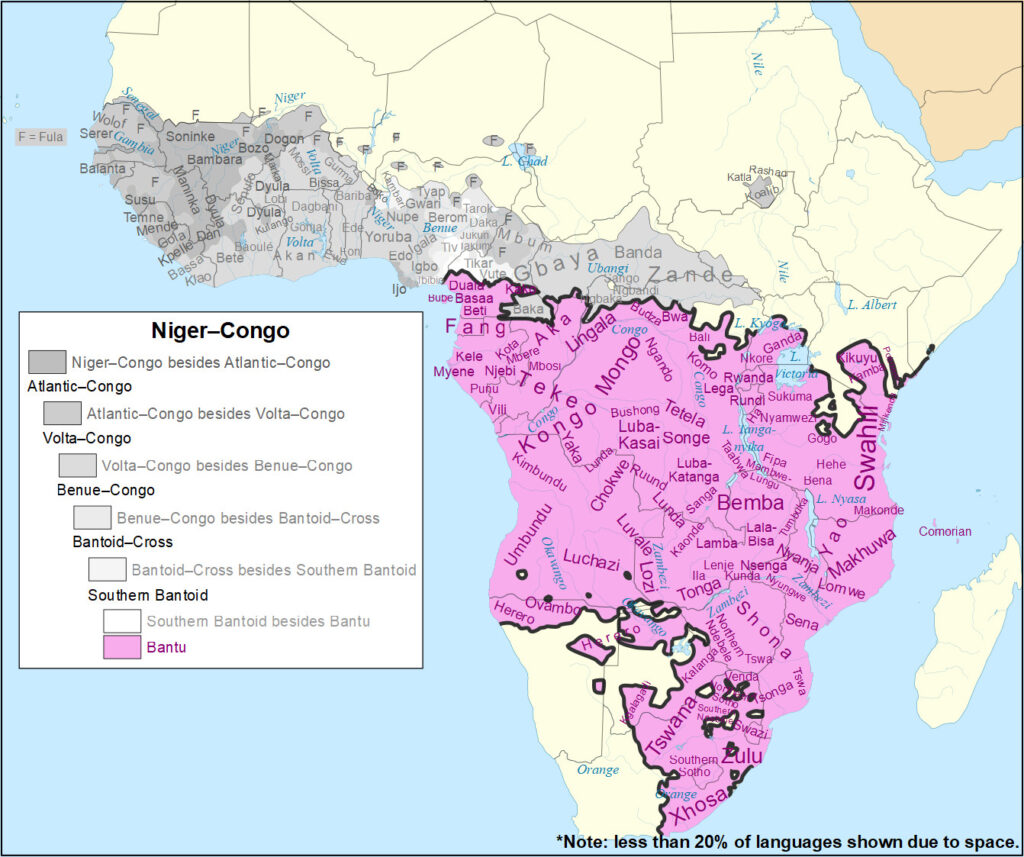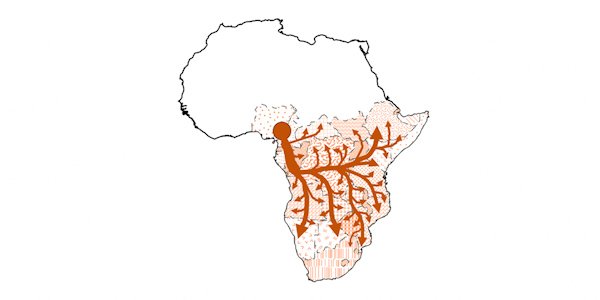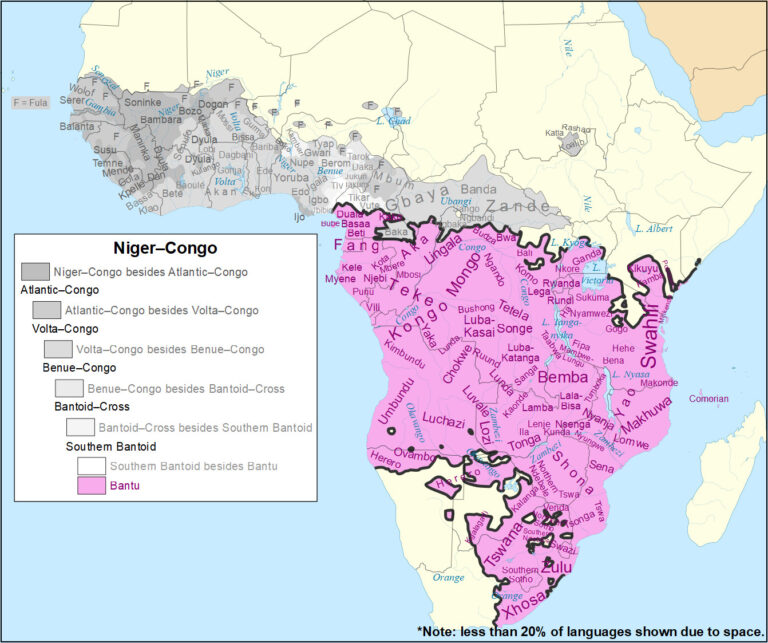New insights into the genetic history of Bantu speakers in Africa thanks to a Ghent University research published in Nature
Bantu is the largest language family in Africa. More than 350 million people speak one or more of the approximately 500 Bantu languages today. This family includes Lingala, Kiswahili, Kikongo, Ciluba, Kinyarwanda and Kirundi, languages also spoken a lot in Belgium and Europe.

In a new interdisciplinary study in Nature, an international group of scientists confirms that the spread of this language family, which started in West Africa about 5,000 years ago, was mainly driven by human migration. Migrating Bantu speakers spread their languages and new ways of life throughout central, eastern and southern Africa. In the process, they established intensive contacts with populations speaking other languages who already lived in those regions, such as hunter-gatherers in the Congo rainforest and the Kalahari Desert.
Most contemporary Bantu speakers have distant ancestors originating from West Africa, while a minority are descended from local populations. The expansion of Bantu languages and their speakers dramatically transformed the linguistic, cultural and biological landscape of Africa.
This new study is based primarily on modern genetic data from 1763 individuals, including 1526 Bantu speakers from 147 different language communities in 14 different African countries, as well as ancient genetic data (aDNA) from 12 individuals from the Late Iron Age. More than one-third of the new data comes from the Democratic Republic of Congo (DRC), previously underrepresented in evolutionary genetic studies.
Together with their Congolese partners, the Ghent University research teams of Prof. Koen Bostoen (BantUGent, Department of Languages and Cultures, Faculty of Arts and Philosophy) and Prof. Joris Delanghe (Department of DiagnosGc Sciences, Faculty of Medicine and Health Sciences) collected modern genetic data. These genetic data were analyzed at the University of Uppsala (Sweden) under the direction of Prof. Carina Schlebusch.
Africanist and linguist Koen Bostoen, who leads interdisciplinary research on the deep history of Central Africa:
“Our study shows that Congo was crucial for the migration and sealement of Bantu language communities even before the start of our era. It represents an important impetus to better understanding a distant past that also concerns many new Belgians.”
Clinical biologist Joris Delanghe, who coordinates medical research in eastern Congo:
“The dataset at the basis of this study will also play a prominent role in future research on health issues which different regions in Congo face.”
Bibliographic information:
Fortes-Lima, C.A., Burgarella, C., Hammarén, R. et al. The genetic legacy of the expansion of Bantu-speaking peoples in Africa, Nature (2023), DOI: https://doi.org/10.1038/s41586-023-06770-6
Press release from Ghent University.
———————————————————————————————————————————————————-
New research sheds light on Bantu-speaking populations’ expansion in Africa
The study is unique in that it contains genetic data of both living and past (archaeological DNA/aDNA) populations.

The vast Bantu-speaking populations in sub-Saharan Africa probably originated in western Africa before moving to the south and east in consistent waves, suggests a study published in Nature on Wednesday, 29 November 2023.
Genetic analysis of modern and ancient individuals offers new insights into the evolutionary history of Bantu-speaking peoples, whose populations began to expand around 6,000–4,000 years ago in western Africa.
The Bantu linguistic family comprises over 500 distinct languages, spoken by approximately 350 million people across sub-Saharan Africa. The expansion patterns of Bantu-speaking populations are notable for their longitudinal progression, through diverse climates and environments, which is far less common than latitudinal movement across like terrains.
Senior author Professor Carina Schlebusch of Uppsala University, Sweden, and colleagues, collated a genomic dataset of 1,763 modern-day individuals (1,526 Bantu-speaking individuals from 147 populations, and 237 other sub-Saharan African individuals) representing all major branches of the Bantu language family and including 117 populations that have gone unrepresented in previous genetic studies.
Additionally, the DNA of 12 ancient individuals from Late Iron Age sites in present-day Zambia and South Africa (spanning 97–688 years before present) was sequenced to provide insights into the ancient history of the Bantu speaker migration patterns. The group analysed the history and movement of Bantu-speaking populations through a combination of genetic, linguistic and geographic modelling.
Dr Anja Meyer and Professor Maryna Steyn in Wits University’s Human Variation and Identification Research Unit (HVIRU) are co-authors of the study as is Professor Himla Soodyall in the Division of Human Genetics. They were involved in the archaeological/aDNA part of the project specifically.
The genetic data provide evidence that Bantu-speaking populations originated in western Africa and expanded through the Congo rainforest into eastern and southern Africa.
The authors observed a pattern of decreased genetic diversity as distance increases from the populations’ point of origin.
The analyses revealed evidence for mixing between Bantu-speaking populations and local groups, which was also found to decrease with distance from the origin point.
This correlation suggests a relatively constant rate of expansion of Bantu-speaking populations, despite the variety in climate and landscapes into which these populations were migrating.
Present-day Zambia and the Democratic Republic of Congo were identified as key points of interaction for expansion of the Bantu-speaking population.
These results provide a valuable resource for future studies into populations in Africa and may also be a resource for studying genetic variation and health in these populations.
Press release from the University of Witwatersrand.



